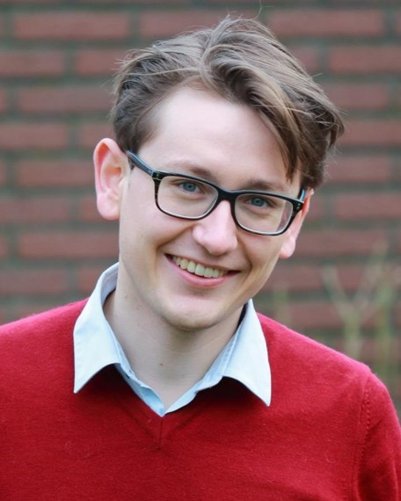Super-resolution ultrasound imaging: microbubbles, neural networks, and simulations
Nathan Blanken is a PhD student in the Department Physics of Fluids. (Co)Promotors are prof.dr. M. Versluis and dr. G.P.R. Lajonie from the Faculty of Science & Technology and dr. J.M. Wolterink from the Faculty of Electrical Engineering, Mathematics and Computer Science.
 Visualizing vascular flow is essential for understanding cardiovascular pathologies, improving diagnosis, and monitoring patients. Ultrasound contrast imaging uses microbubbles to enhance the scattering of the blood volume, enabling real-time visualization of blood flow. Recent developments in vector flow imaging have expanded the imaging capabilities of ultrasound by temporally resolving fast arterial flow. However, a key challenge that remains is the limitation in spatial resolution.
Visualizing vascular flow is essential for understanding cardiovascular pathologies, improving diagnosis, and monitoring patients. Ultrasound contrast imaging uses microbubbles to enhance the scattering of the blood volume, enabling real-time visualization of blood flow. Recent developments in vector flow imaging have expanded the imaging capabilities of ultrasound by temporally resolving fast arterial flow. However, a key challenge that remains is the limitation in spatial resolution.
This thesis investigates the application of neural networks to ultrasound radiofrequency (RF) data to achieve super-resolution contrast-enhanced ultrasound imaging. Additionally, the demand for large datasets to train deep learning-based computational ultrasound imaging methods necessitates the development of a simulation tool that can reproduce the physics of ultrasound wave interactions with tissues and microbubbles.
Chapter 1 highlights recent advances in ultrasound imaging, including microbubble technology, ultrafast imaging, and ultrasound localization microscopy (ULM). ULM has recently gained much attention as an ultrasound super-resolution method. However, ULM relies on low concentrations of microbubbles in the blood vessels, resulting in long acquisition times.
Chapter 2 presents an alternative super-resolution approach, based on direct deconvolution of single-channel ultrasound RF signals with a one-dimensional dilated convolutional neural network (CNN). Because the neural network effectively deconvolves the RF data, the conventional link between pulse length and resolution no is broken. Therefore, Chapter 3 explores the effect of transmit pulse characteristics on super-resolution performance.
However, these initial studies rely on synthetic data generated by a simplified simulator, hindering the translation to in-vitro and in-vivo studies. Chapter 4 addresses this issue by developing a physically realistic simulator, PROTEUS, incorporating phenomena such as hemodynamics, medium inhomogeneity, nonlinear propagation, and nonlinear microbubble behaviour. Chapter 5 applies this simulator to various contrast-enhanced ultrasound scenarios.
Chapter 6 addresses the need for accurate system characterization. A complete transducer characterization is performed, culminating in a virtual transducer that can be employed to generate realistic training data with ground truth labels for future studies.





